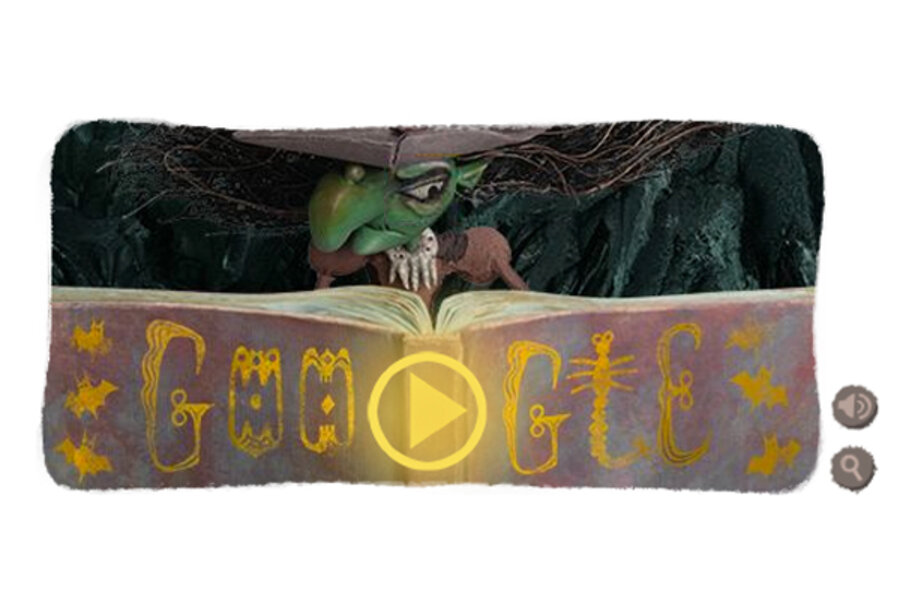Halloween witch: The real history behind Google's doodle
Loading...
Emerald skin, a wart perched on a hooked nose, wild black hair, and a bubbling cauldron – the description of a witch brings to mind spooky childhood tales and evil cackling laughter.
It’s Google who is cackling today. In honor of Halloween, Google created a dark animation for its homepage featuring the iconic lady on a broomstick. A shifty-eyed sorceress mixes a dark kettle of neon green liquid, and Googlers can add any combination of four ingredients to the pot: a skull, an apple, a bone, and a potion. The result of these concoctions? Find out on Google.
But witches have concocted and cackled in history long before Google existed.
The first witches were seen as healers, known in local villages and towns as the women to go to when feeling sick as they could whip up a quick herbal remedy.
However, in Europe during the Middle Ages, many witches were seen as connected to sorcery and the devil. The Christian church believed witches were given special powers in return for their loyalty to Satan. This way of thinking ushered in an anti-witch hysteria that stretched from the 15th to 18th century that left tens of thousands dead due to paranoid executions.
This worry made it overseas as well. The Salem Witch Trials, which took place in Massachusetts in the 1690s, are one of the most famous examples of anti-witch panic in history. After several young girls in Salem began contorting their bodies and wailing beyond anyone’s control, people within the town began suspecting witchcraft, and quickly pointed fingers at any marginalized person in town, like one family’s African slave and a homeless beggar. Soon the area dissolved into paranoid blaming, trials with little evidence, and torturous imprisonment for more than 200 people. By the time the hysteria died down, more than 20 people had been executed for being witches.
Today, the term "witch" sometimes applies to people who practice Wicca, a modern pagan religion. Though their practice and beliefs are diverse, the religion focuses on a “mother goddess”, connection to nature, and seasonally based festivals known as “Sabbats”.
The witch character became associated with Halloween due to the fall holiday’s pagan roots – the witch is thought to be inspired by a pagan goddess that closely resembles an old crone.
Though the world is free of actual green-skinned evil sorceresses, the witch is one of popular cultures’ favorite characters, starring in everything from “The Wizard of Oz” to “Wicked” to “Sabrina the Teenage Witch." However, as a metaphor, witches aren’t so lucky: a “witch hunt” is known as furiously persecuting a group with little regard to guilt or innocence, often using said group as a scapegoat for larger ills in society.
For today, however, witches get the spotlight as a symbol of Halloween and a personalized Google Doodle.








